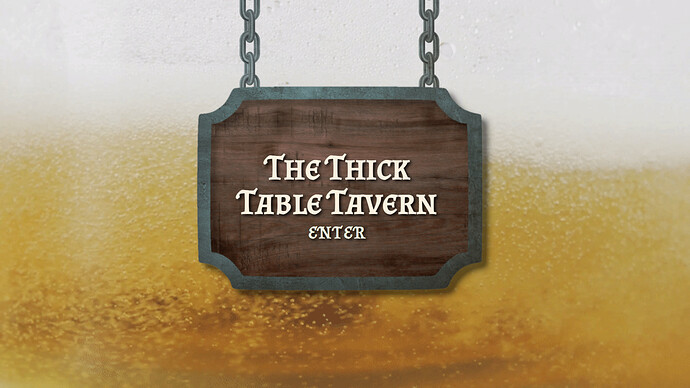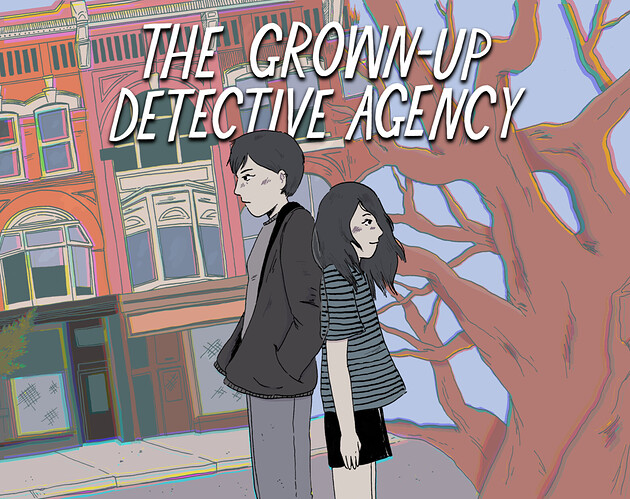I always waffle about if I want to be reviewing/judging at all: I’m almost exclusively interested in “how could this thing work better?” so then I’m probably more critical than is helpful to anybody, authors or players. I’m also… pretty impatient with works that make big claims and then fail to live up to them (or even just “unique! compelling!”: don’t tell me how I feel about it), where I might enjoy the exact same thing if it was clearly “here’s a weird experiment that maybe doesn’t quite work, but eh, some people will like it.”
I’m probably better as an early- or mid-stage tester when you’re trying to decide if a concept has legs and which parts need work. But I think I’m going to throw some thoughts in here and try to keep it fairly positive…
Esther
This is short, it’s charmingly illustrated, there are no wrong choices: it’s basically an illustrated children’s book. I loved the little detail of the re-colored illustrations at the end for the different flavors of pudding. Well worth the 5-15 minutes you’ll spend with it.
Critical thoughts
I definitely went, “why is there a halved-avocado-plus-pit as the logo, and as the bullet point for the choices … oh.” But even looking back, it felt more confusing than intriguing to me.
The whole “pretending to something you’re clearly not because you think it makes you look good” isn’t my favorite, but lots of kids books are about people looking foolish because of their poor behaviour so, eh, it was too short for this to really bother me.
Trouble in Sector 471
Regulars will know that Arthur DiBianca often writes puzzle-boxes with a minimal frame story, sometimes with an extra-fiendish second half that you have to find a secret entrance to even see. But recently he’s been making more approachable games and this one is no exception. I managed to get all 8 of the optional objectives in about two-and-a-half hours? And talking to the robots made it feel a little more story-like to me. The map was a nice size, big enough to have interesting connections but small enough that it usually wasn’t too annoying to walk from place to place. I love the naming of the commands that you pick up: in particular I kept chuckling at HUP for jumping, and a bunch of its uses were very silly and fun.
Critical thoughts
I wasn’t a huge fan of the “you know what that means, and you know what to do” attitude at the very beginning when, as a player, obviously you don’t. But eh, whatever. The first bit is linear enough that there’s one clear way to go, and by the time it branches out you’ve found your footing.
I wished there had been a third mode to the map that showed where the robots were. And the abbreviations felt a little too similar sometimes and I had a hard time remembering which was which. But I don’t know what you’d do about that. And of course the ASCII map isn’t going to be screenreader accessible, but again, I don’t know what else you could do within the restrictions of a glulx interpreter…
Admiration Point
The author said on Twitter “I have played a lot of dating games in my life, and they are all based on the fantasy that having a crush is fun and will be reciprocated. What if neither were true?” Which I think is probably a better description than the one on the IFComp ballot or in-game. So “fun” is maybe not the word for this, but it’s an interesting treatment of an under-explored topic in a near-future sci-fi setting.
Critical thoughts
Just damning-with-faint-praise sort of stuff? The writing is fine, the implementation is solid, I liked the presentation.
I never got into fanfic (largely because I’ve had zero contact with any of the source material, probably), but I went through a period where I read a lot of free or inexpensive self-published novels online. This gives me that feeling of one of those where it’s clearly head and shoulders above most of the free stuff, but it doesn’t quite have that quality that makes you think “this is going to disappear one day soon because the author found a publisher.”
The Archivist and the Revolution
I just started this one, so not many thoughts yet. If you like Autumn Chen’s other games, go for it. As a technical detail, I like the filters for the backgrounds: mostly just a couple colors with dithering, but where the dithered points of color are much smaller and sparser than the resolution that their spacing suggests. And the detail that the TV/monitor gets colored in the “entertainment” menu: excellent. The writing seems solid, it’s revealing itself nicely. For some reason I’ve been reading it out loud to myself, so have a crummy recording of days 0 and 1 of five if you’re into that sort of thing. Well, not all of day 1, but likely most of it, I think.

